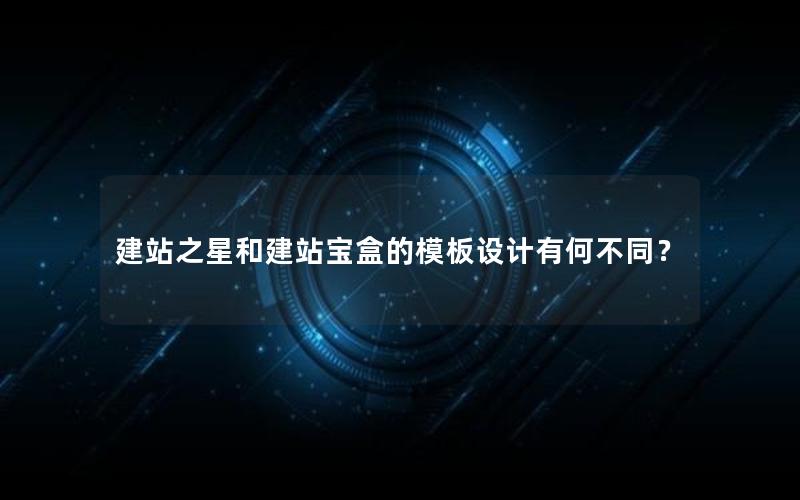前言
在很多时候,我们代码中会有很多分支,而且分支下面的代码又有一些复杂的逻辑,相信很多人都喜欢用 if-else/switch-case 去实现。做的不好的会直接把实现的代码放在 if-else/switch-case 的分支之下:
|
1
2
3
4
5
6
7
8
9
10
11
12
13
14
15
16
|
switch ( type ) {
case case1:
...
...
break;
case case2:
...
...
break;
case case3:
...
...
break
default:
return null;
}
|
这样的代码不仅冗长,读起来也非常困难。做的好一点的会把这些逻辑封装成函数然后在分支中调用:
|
1
2
3
4
5
6
7
8
9
10
|
switch ( type ) {
case case1:
return case1func();
case case2:
return case2func();
case case3:
return case3func();
default:
return null;
}
|
即使这样也是面向过程思维的写法,以前写 c 程序的时候也总喜欢这样写,毫无设计模式可言。不仅违背开闭原则,而且随着 switch-case 分支的增多,该段代码只会越来越冗长。其实这种代码已经有成熟的模式去消除诸多的 if-else/switch-case 分支。本文就教大家在 spring 中如何用注解+策略模式+简单工厂的方式消除 if-else/switch-case 。我们就拿 qq 空间的个人中心举例子,假如 qq 空间个人中心有四个 tab 分别是列出我的说说、我的日志、我的照片和我的访客。一般的后台代码很有可能如下:
|
1
2
3
4
5
6
7
8
9
10
11
12
13
14
15
16
17
18
19
20
21
22
23
24
25
26
27
28
29
30
31
32
33
34
35
36
|
//各个 tab 名称的枚举:
public enum userrelatedtype {
/**
* 说说
*/
shuoshuo("说说"),
/**
* 日志
*/
rizhi("日志"),
/**
* 发布
*/
zhaopian("照片"),
/**
* 访客
*/
fangke("");
private string desc;
userrelatedtype(string desc) {
this.desc = desc;
}
public string getdesc() {
return desc;
}
public void setdesc(string desc) {
this.desc = desc;
}
}
|
列出 qq 用户个人中心相关 tab 的代码:
|
1
2
3
4
5
6
7
8
9
10
11
12
13
14
15
16
|
public list<userrelatedvo> listrelated(userrelatedquery query){
userrelatedtype relatedtype = userrelatedtype.valueof(stringutils.uppercase(query.gettype()) );
switch ( relatedtype ) {
case shuoshuo:
return listrelatedshuoshuo( query );
case rizhi:
return listrelatedrizhi( query );
case zhaopian:
return listrelatedzhaopian( query );
case fangke:
return listrelatedfangke( query );
default:
return null;
}
}
|
而采用注解+策略模式+简单工厂,重构后代码如下:
1、定义一个注解,用来完全消除 if-else:
|
1
2
3
4
5
6
7
8
|
@target(elementtype.type)
@retention(retentionpolicy.runtime)
public @interface relatedtypeannotation {
/**
* 用户相关类型名称
*/
userrelatedtype value();
}
|
2、先定义了个接口,所有 tab 都要实现该接口。其中 list 是 tab 数据展示的方法。
|
1
2
3
4
5
6
7
8
9
10
|
public interface userrelated {
/**
* 列出详细信息
*
* @param query
* @return
*/
list<userrelatedvo> list(userrelatedquery query);
}
|
3、定义具体的各个 tab 的实现,继承 userrelated 策略接口
我的说说
|
1
2
3
4
5
6
7
8
9
|
@component("userrelatedshuoshuo")
@relatedtypeannotation( value = userrelatedtype.shuoshuo )
public class userrelatedshuoshuo implements userrelated {
@override
public list<userrelatedvo> list(userrelatedquery query) {
system.out.println("我的说说!");
return list;
}
}
|
我的日志
|
1
2
3
4
5
6
7
8
9
|
@component("userrelatedrizhi")
@relatedtypeannotation( value = userrelatedtype.rizhi )
public class userrelatedrizhi implements userrelated {
@override
public list<userrelatedvo> list(userrelatedquery query) {
system.out.println("我的日志!");
return list;
}
}
|
我的照片
|
1
2
3
4
5
6
7
8
9
|
@component("userrelatedzhaopian")
@relatedtypeannotation( value = userrelatedtype.zhaopian )
public class userrelatedzhaopian implements userrelated {
@override
public list<userrelatedvo> list(userrelatedquery query) {
system.out.println("我的照片!");
return list;
}
}
|
我的访客
|
1
2
3
4
5
6
7
8
9
|
@component("userrelatedfangke")
@relatedtypeannotation( value = userrelatedtype.fangke )
public class userrelatedfangke implements userrelated {
@override
public list<userrelatedvo> list(userrelatedquery query) {
system.out.println("我的访客!");
return list;
}
}
|
3、定义一个从 spring context 获取 bean 的工具类
|
1
2
3
4
5
6
7
8
9
10
11
12
13
14
|
@component
public class springcontextutil implements applicationcontextaware {
private applicationcontext context;
public applicationcontext getcontext() {
return context;
}
@override
public void setapplicationcontext(applicationcontext context)throws beansexception {
this.context = context;
}
}
|
4、定义一个简单工厂,用来生产各种 tab 对象。
|
1
2
3
4
5
6
7
8
9
10
11
12
13
14
15
16
17
18
19
20
21
22
|
@component
public class userrelatedfactory {
@autowired
springcontextutil springcontextutil;
private static map<userrelatedtype, userrelated> userrelatedmap = maps.newconcurrentmap();
//工厂将 spring 装配的相关的 bean 用 map 保存起来
public userrelatedfactory(){
map<string, object> beanmap = springcontextutil.getcontext().getbeanswithannotation(relatedtypeannotation.class);
for(object userrelated : beanmap.values()) {
relatedtypeannotation annotation = userrelated.getclass().getannotation(relatedtypeannotation.class);
userrelatedmap.put(annotation.value(), (userrelated)userrelated);
}
}
public static userrelated createrelated(userrelatedtype relatedtype) {
return userrelatedmap.get( relatedtype );
}
}
|
5、调用的代码(listrelated 会在 controller 中被调用)。
|
1
2
3
4
5
6
7
8
9
10
|
public list<userrelatedvo> listrelated(userrelatedquery query){
userrelatedtype relatedtype = userrelatedtype.valueof(stringutils.uppercase(query.gettype()) );
userrelated related = userrelatedfactory.createrelated( relatedtype );
if( related != null ) {
return related.list( query );
} else {
return null;
}
}
|
重构后的代码如果需要再新增一种 tab,比如我的好友,只需要新增一种类型继承 userrelated 实现其中的 list,并加上相应的注解即可。
其实这是一种通用的解决方案,当你 if-else/switch-case 的分支超过 3 个、且分支代码相似且冗长的情况下就应该考虑这种模式。这种模式写出的代码面向对象、清晰、易扩展还高大上,何乐而不为呀,赶紧试试吧!
总结
以上就是这篇文章的全部内容了,希望本文的内容对大家的学习或者工作具有一定的参考学习价值,谢谢大家对快网idc的支持。
原文链接:https://juejin.im/post/5ca9f113e51d452b5e458ec3
相关文章
- 个人服务器网站搭建:如何选择适合自己的建站程序或框架? 2025-06-10
- 64M VPS建站:能否支持高流量网站运行? 2025-06-10
- 64M VPS建站:怎样选择合适的域名和SSL证书? 2025-06-10
- 64M VPS建站:怎样优化以提高网站加载速度? 2025-06-10
- 64M VPS建站:是否适合初学者操作和管理? 2025-06-10
- 2025-07-10 怎样使用阿里云的安全工具进行服务器漏洞扫描和修复?
- 2025-07-10 怎样使用命令行工具优化Linux云服务器的Ping性能?
- 2025-07-10 怎样使用Xshell连接华为云服务器,实现高效远程管理?
- 2025-07-10 怎样利用云服务器D盘搭建稳定、高效的网站托管环境?
- 2025-07-10 怎样使用阿里云的安全组功能来增强服务器防火墙的安全性?
快网idc优惠网
QQ交流群
-
2025-05-29 64
-
2025-06-04 92
-
2025-05-25 41
-
2025-05-25 31
-
2025-05-27 46









